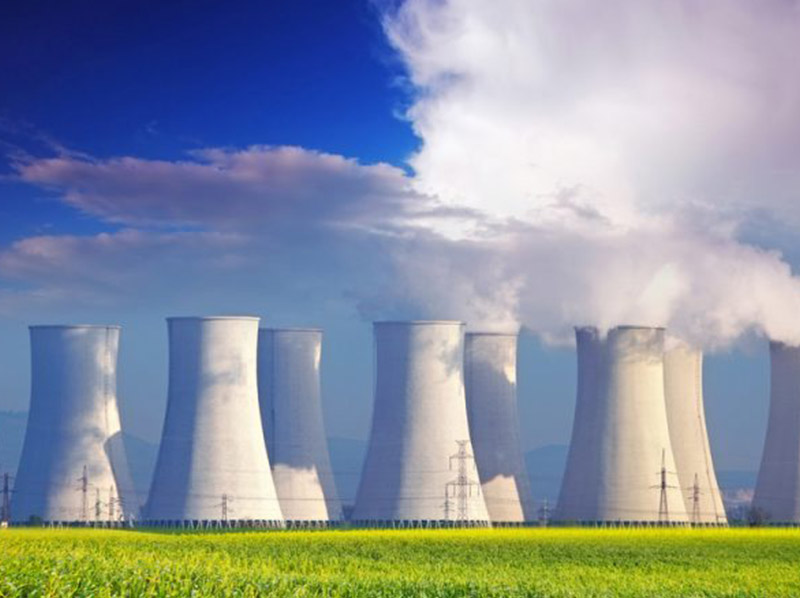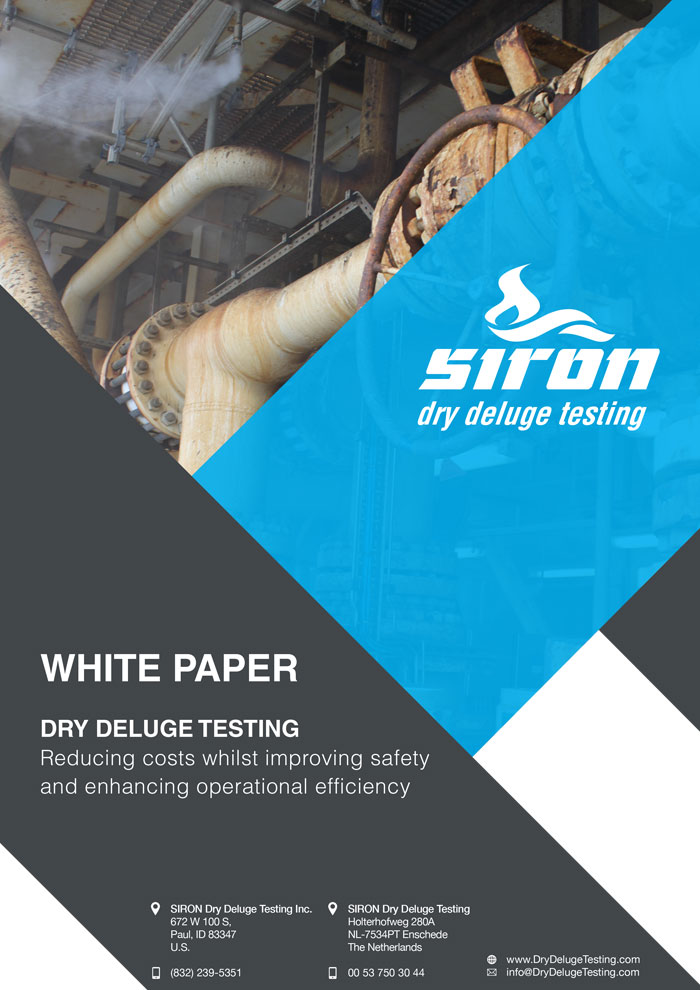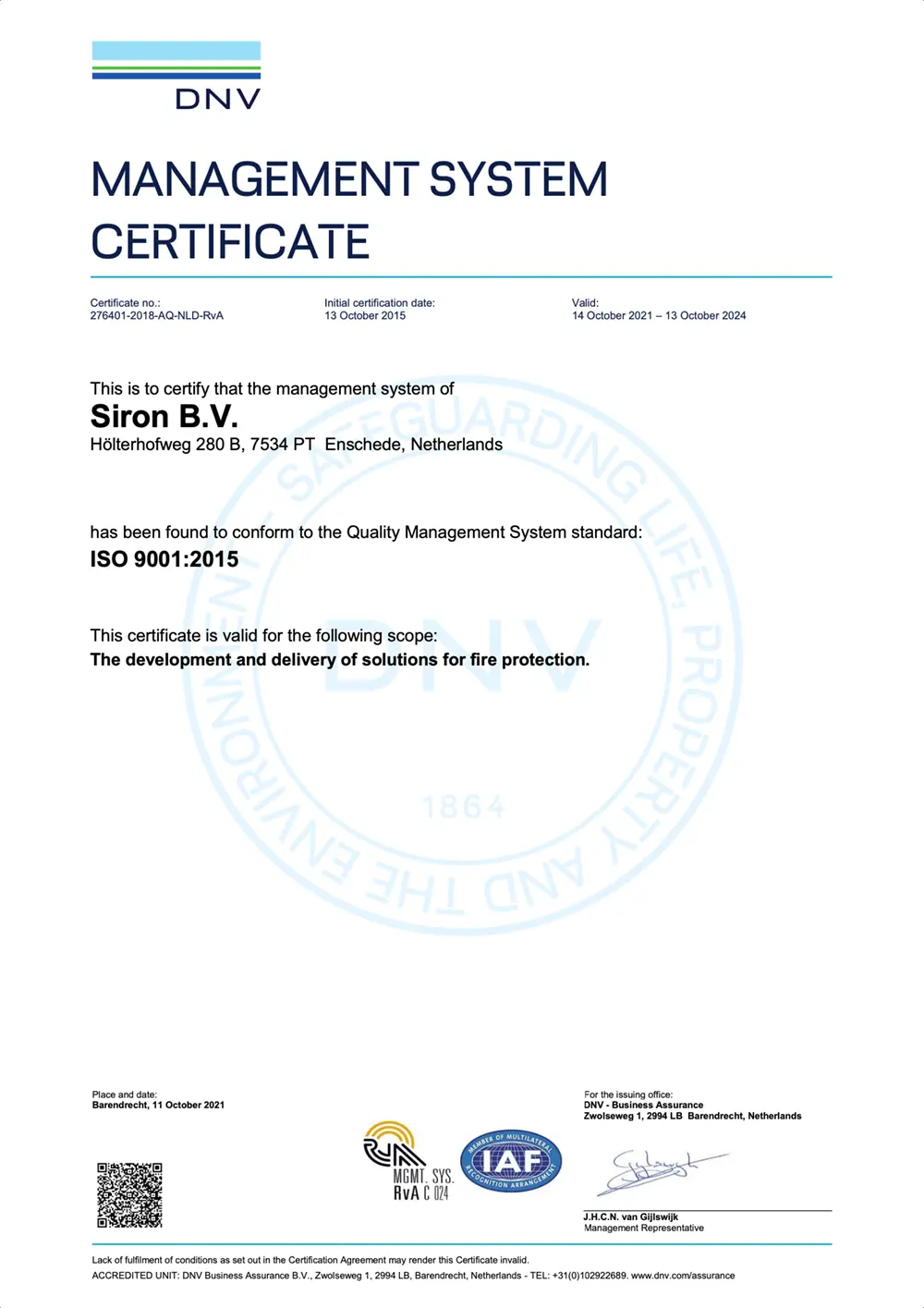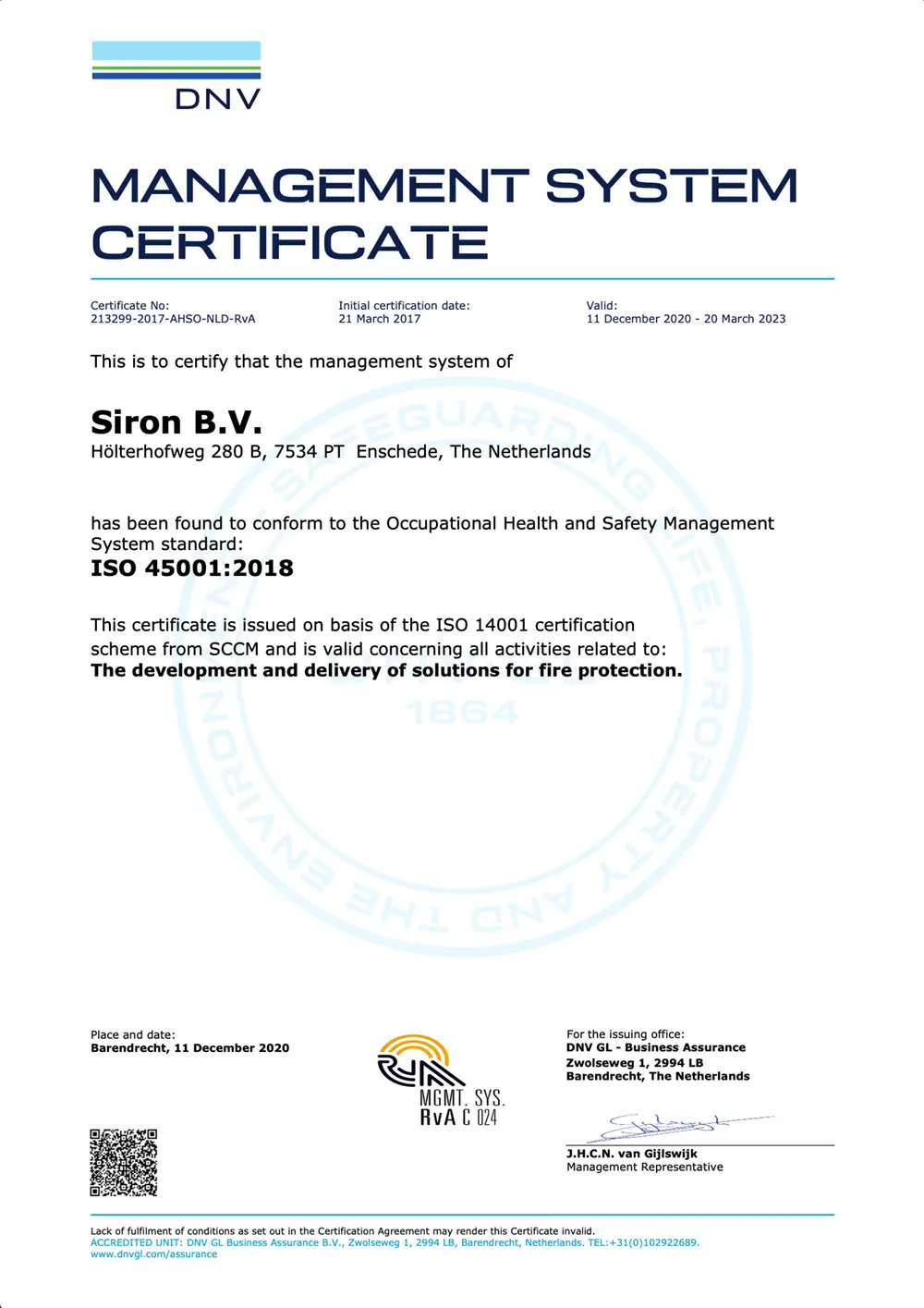Identification of damaged nozzles utilizing dry deluge testing is almost the same as during a wet test. If a nozzle is damaged or partially blocked the spray pattern in a wet testing environment will differ from that of an unblocked nozzle. Where a normal nozzle has a perfect circular spray pattern, a damaged or partially blocked nozzle will show gaps in this circle. Although with Dry Deluge Testing, the nozzles will demonstrate different spray patterns, the distinction between normal and non-performing nozzles can be easily and efficiently identified.
The pressurised vapor will demonstrate a non-circular vapor cone as well. During a test, you can inspect every nozzle from a close distance of a couple of inches to study the exiting vapor pattern. This close-up inspection leads to a better identification of the damaged and partially blocked nozzles from the free flowing ones.








